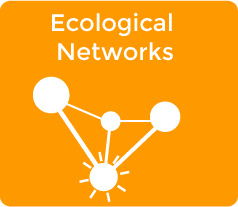
Ecological Networks – Overview
The development of network concepts for students begins with a highly interactive inquiry into cell phone networks. Cell phones serve as a handy knowledge base on which to develop understanding. Each cell phone represents a node, and each phone’s address book represents an edge, or the calling relationships between cell phones.
Ecological Networks-Overview
Ecological Networks Overview Course: Life Science, Integrated Science, STEM Unit: Ecological Networks Part 1- Network interactions An Introduction to Networks The development of network concepts for students begins with a highly interactive inquiry into cell phone networks. Cell phones serve as a handy knowledge base on which to develop understanding. Each cell phone represents a node, and each phone’s address book represents an edge, or the calling relationships between cell phones….
Ecological Networks-Unit Plan
ECOLOGICAL NETWORKS Ecological Networks – UNIT PLAN Course: Life Science, Integrated Science, STEM Unit: Ecological Networks Part 1- Network interactions Introduction: This 2 week curriculum module gives middle and high school students an introduction to 1) the concept of systems (aka networks), 2) using software tools to analyze networks, and 3) using both experimentation and networks as a way to define hypotheses and test outcomes. Please see the tabs on this page for…

Teacher Background Information – Ecological Networks
The Great Salt Lake is an interesting ecosystem to study due to the organisms that inhabit this saline environment and due to the impact humans have had on this ecosystem. In 1952, a causeway was built to replace an existing railroad trestle. Unlike, the previous trestle, the new causeway does not allow circulation of water between the two sides of the Great Salt Lake.


